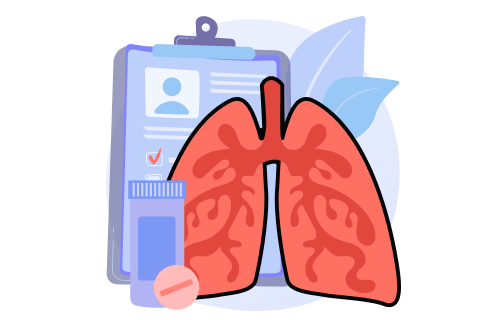If you have trouble breathing or experience symptoms such as coughing or shortness of breath, your doctor might suggest pulmonary function tests (PFTs). These tests check how well your lungs work. Here is more information on what these tests involve:
Understanding Pulmonary Function Tests
Pulmonary function tests help provide a clear picture of how your lungs work in several ways. Doctors can look at the amount of air your lungs can hold and how efficiently you move air in and out. It measures the following metrics:
- Lung volume: This is the total amount of air your lungs can hold. “Tidal volume” measures normal breath in and out, and “total lung capacity” looks at your lungs when they’re completely full.
- Airflow: The tests check how quickly you can breathe air out. You might see terms such as “forced expiratory volume” (the amount you breathe out in one second) and “peak flow,” which shows your fastest exhalation.
- Gas exchange: Your body needs to move oxygen from the air in your lungs into your blood. PFTs can check how well your lungs handle this process, helping identify if gas exchange works as it should.
Exploring Common PFTs
Doctors commonly use several pulmonary function tests (PFTs), each offering valuable insights. Spirometry is a quick and simple test where you breathe through a mouthpiece, taking a deep breath and then blowing out as hard and fast as possible. The machine measures the amount of air you move and how quickly you do it. This test is often used to diagnose conditions like asthma or other breathing issues.
Another type of PFT is lung volume testing, where you might sit in a special booth and breathe in and out through a mouthpiece. This test measures the total space in your lungs, helping to determine if they are smaller than expected or holding too much air. Gas exchange testing assesses how efficiently your lungs transfer gases like oxygen into your bloodstream.
Examining Test Results
Pulmonary tests can help your healthcare team identify the pattern of your breathing issue. Obstructive patterns occur when it’s difficult to breathe air out of your lungs, even though you can take air in. This is commonly seen in conditions like asthma or chronic obstructive pulmonary disease (COPD).
Restrictive patterns, on the other hand, happen when it’s harder to fill your lungs with air initially, even though you can breathe out normally. This is often associated with lung diseases, such as pulmonary fibrosis. The test results will typically show a lower total lung capacity. Gas exchange issues arise when your lungs struggle to move oxygen from the air into your blood. Pulmonary function tests can reveal how well your lungs are exchanging gases.
Learn More About Pulmonary Function Tests
Pulmonary function tests offer a safe and thorough way to check how well your lungs work. These tests measure different aspects of breathing, including how much air you move and how fast you move it. Your doctor uses these results to get a clear view of your respiratory health and to guide any next steps in your care. Consult with your specialist to learn more.








